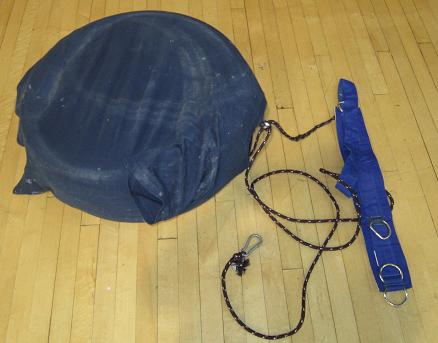by Art Horne
Ray Eady originally told me about using tires instead of speed sleds on the basketball court a few years back after visiting Matt Herring at the University of Florida. Since that time it has become a staple in our speed training development.

ADVANTAGE TIRES:
- Carpet on metal sleds slide off and cause marks on gym floors and need constant checking and maintenance. With the tires you may have to change the t-shirt once a year depending on the amount of external weight added or amount of tread still left on the tire (if you can choose, pick tires with little to no tread left.) We still have a few in their original t-shirts!
- We all know a big guy with an XXL t-shirt (you work in the weight room right?), so outfitting these is easy.
- Cost is low: just go to your local dump or ditch and you can find them for free. Junk yards are more than happy to give you old tires to avoid the cost of disposing them themselves.
- Besides the cost of clips, belts (which you already have) and some rope, it’s relatively inexpensive.
- Need more weight? No problem: we add medicine balls on top of the t-shirts. The weight of the ball sags in the shirt and rarely pops off the back.
- Still need more weight? For other sports, or the rare basketball athlete that needs a bit more, we’ve added scuba weights permanently inside the tire. These heavier tires can be separated from the lighter ones by dressing them in say red t-shirts, the regular tires in black and if you can find some smaller tires put them in white t-shirts. This will help distinguish different weighted tires if your goal is contrasting weights/runs, but also allow you to easily point those athletes who don’t have the strength to handle the heavier tires to the right ones.
- Typical run progressions include:
o Lean fall run
o Tire only run x 6
o Tire with Medicine ball x 6
o Body weight sprint
o Groups of 3 usually work together (each athlete has their own belt on) to ensure enough rest to adequately give max effort on each sprint. If you feel as though this is not enough, put 5 athletes in a group (3 on one end, sprint court, switch tire to next in line, next athlete sprints back, repeat. This will give you a work to rest of 1:4 plus change time)
